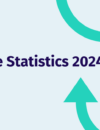
You’d have to be pretty far removed from society if you hadn’t heard of the gender pay gap in this day and age.
To sum up: the gender pay gap refers to the difference between the average earnings of men and women, with men found to be earning more than their female colleagues in almost every industry, and wage disparities as great as 60% in certain sectors.
There are very few countries where women out-earn men, and even in those cases, it tends to be white women without children. As we start to examine the earnings of other female groups, we find that women of colour earn even less than their white counterparts; averaging at about 56p for every pound earned by a man.
Understanding the controlled and uncontrolled pay gap
The pay gap can be broken down into two categories: the controlled pay gap, and the uncontrolled pay gap.
The controlled gap refers to the difference in pay between men and women working the same job, with the same qualifications.
The uncontrolled gap measures the overall difference in pay between men and women, regardless of the roles and industries in which they work.
According to the government’s most recent report, the median gender pay gap in the UK remains high at 9.71%, with an hourly difference of £2.41. This remains worryingly close to the levels reported in 2017, when employers were first required to publish the information.
The gender pay gap widens even further for women from minority ethnic backgrounds, with a 26% pay gap for Black African women, a 28% pay gap for Bangladeshi women, and a staggering 31% gap for Pakistani women. When calculating the total earnings for a year compared to the average male worker, it works out that most UK women from minority ethnic backgrounds have already stopped earning two months before Equal Pay Day.
Is any woman exempt?
It’s easy to assume that wage injustice only occurs at a seniority level and within industries we’re all familiar with. Most of us know what it’s like to work in an office with a male-heavy senior leadership team, or a male-owned business where the highest earners are – you guessed it – men, but what happens in the worlds that we’ve never been a part of? For example, the glitzy, glamorous world of entertainment – surely those dazzling stars we see on screen would be safe from any of the issues us ‘normal’ people have to face?
It turns out, even multimillion-dollar lifestyles can’t buy you an exemption.
Sure, that’s still a huge amount of money to the average person, but the principle is the same. Women have been part of the entertainment industry for just as long as men, they play similarly central roles in projects with equal screen time, they attract a huge portion of the audience through their own fan bases, and they’re therefore responsible for a huge amount of the revenue that each project brings in – so why is the gender pay gap still an issue in 2023?
Hollywood’s ugly truth
In Hollywood, female actresses have been found to earn, on average, around $1.1m dollars less than male actors with the same level of experience. In a study by the University of Huddersfield, entitled ‘Hollywood’s million dollar gender pay gap’, it was discovered that the gender pay gap was as high as 56% in some cases, with an average gap of around 30%.
Oscar-winning actress Jennifer Lawrence has said of the pay gap: “What I have seen — and I’m sure other women in the workforce have seen as well — is that it’s extremely uncomfortable to enquire about equal pay. And if you do question something that appears unequal, you’re told it’s not gender disparity, but they can’t tell you what exactly it is.”
As seen in every other industry, the gap only worsens for women of colour.
Actress Priyanka Chopra Jonas has shared that, over the span of her 22-year acting career, she only received equal pay for the first time with her recent series, ‘Citadel’.
“I’ve never had pay parity in Bollywood. We’ve asked, but we’ve not got it. I’ve done about 60 movies but only ever been paid about 10% of my male co-actor. When I did Citadel, that’s the first time in 22 years that I had pay parity.”
Life in plastic – is the pay fantastic?
As the cinematic spectacle of the year, everyone’s eyes are set to be on the Barbie movie this summer.
As a female-directed, female-written, and partly female-produced film, could this be the feminist epic we’ve all been waiting for? Will it pave the way for women in the film industry – or at the very least, pay its cast equally?
In an exclusive report from Variety, it was revealed that co-stars and leads of the film, Margot Robbie and Ryan Gosling, have taken an equal payout of $12.5m each for their parts in Barbie.
While it’s worth celebrating that the male and female leads are actually being paid equally for a change, it does raise a question – should Margot Robbie not have been paid more, since she plays the titular role? After all, male actors are paid more than their female co-stars all the time, even for films carrying far less weight than Barbie.
So – is anybody doing it right?
There’s a long, long way to go, but there is hope.
In Priyanka Chopra Jonas’ words: “It takes women in positions of power, creating space for other women, which is why we need women in decision-making roles.”
As much as we might want to, none of us can single-handedly change the world – or the deeply entrenched gender bias in the wage system. What we can do, however, is use the privilege and power available to us to make small strides towards progressive change – whether that’s using any decision-making powers we have at work, supporting organisations such as The Fawcett Society, or simply spending our money on businesses that have eliminated the gender pay gap.
For those in the UK, there’s a public database available via gov.uk which reveals gender pay gap data for all companies with 250 employees or more. While it’s not the responsibility of the consumer to change an organisation’s approach to how they pay their employees, we can at least choose to spend our money in places where it’ll pay towards a fair wage for female staff – at least, until it becomes the norm nationwide.
At Druthers, it’s our mission and our passion to empower organisations to find the best person to make an impact on their work, from a diverse shortlist of remarkable talent. Get in touch with us to find out how your business can make a positive change to your hiring and retention processes.





